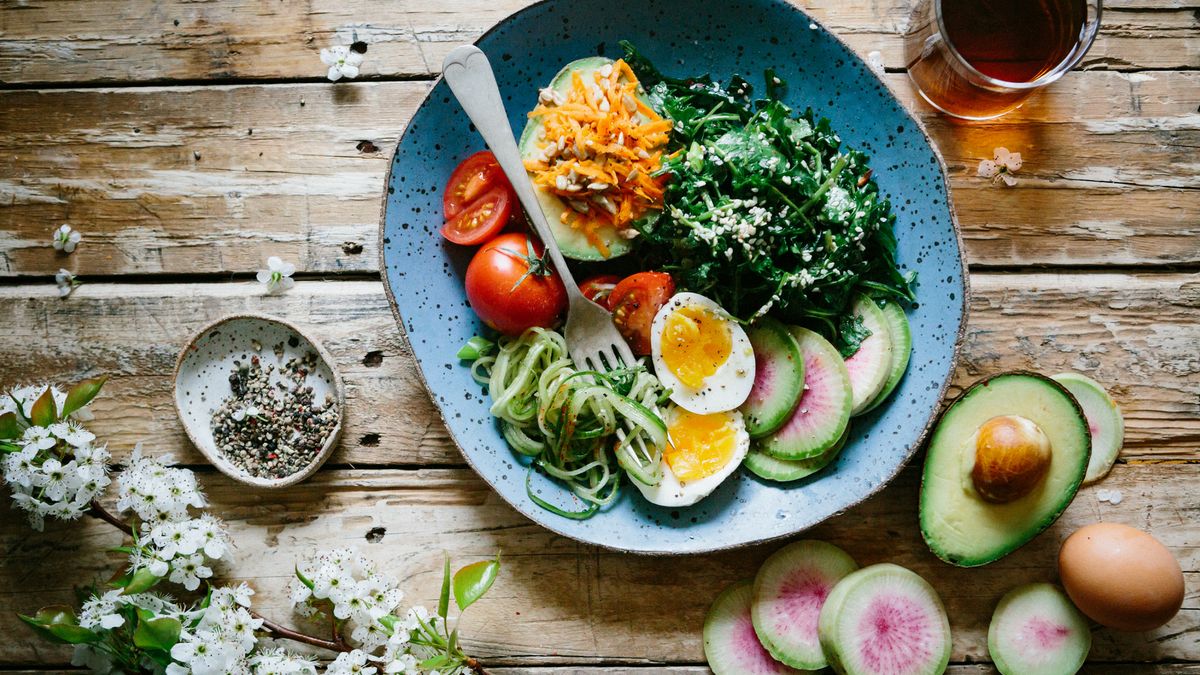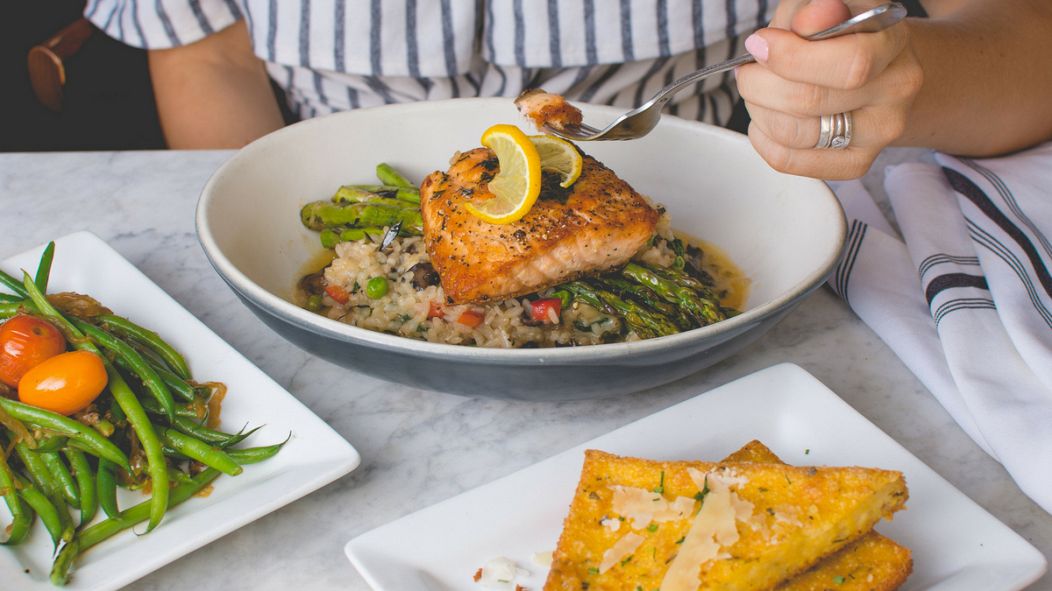The non-diet approach to health and wellness, that aims to break the cycle of chronic dieting and heal people’s relationship with food.
After three years using a smartphone app to track down the calories she was consuming each day, Kiara Gabrielle Licursi decided she had enough. Training regularly at the gym, jumping ropes and taking her health and fitness seriously, she also wanted to think about food differently.
“I was forgetting the main rules that I have for myself which are about health and not weight loss. I wanted to live more freely and to eat based on how my body was feeling and on how intense my training was. So I turned to intuitive eating,” she explains.
Intuitive eating is a different, non-diet approach to health and wellness, that aims to break the cycle of chronic dieting and heal people’s relationship with food. It’s about rejecting rules, restrictions or schedules that surround food and learning to listen to the body and the signals it sends.
The term was first coined in the 1990s when two dietitians, Evelyn Tribole and Elyse Resch, published a book about it. This is an idea that has been around for a while then, but it has regained popularity in recent years and a growing number of people - whether fitness enthusiasts like Licursi or individuals who may just have a general interest in being healthier - are trying it out.
“This renewed interest in intuitive eating is building on the work of fat acceptance and the anti-dieting movement which has very deep roots and has been going on for many years. As dietitians, our role is to help people recover a healthier relationship with food, and intuitive eating is an interesting approach to do this,” says UK-based registered dietitian Jess Rann.
Intuitive eating in practice
But what does intuitive eating mean in practice? The perspective of not having rules to follow and of reconnecting with our body may sound a bit daunting, especially if you have been used to dieting for years. It takes time to adjust to a way of eating that asks you to be more relaxed about food, and understanding your own cravings, and your hunger and satiety cues takes practice. The principles laid out by Tribole and Resch may be interesting to start out (see box below).
“There is no right or wrong way to intuitive eating. Thinking there is a specific technique you can apply is actually part of the diet mentality. Intuitive eating is being a bit more intentional with you eating, but without following rigid rules, it’s honouring your hunger when you are hungry and asking yourself the questions: Am I hungry now? What am I hungry for? What can I eat to feel well?”, US-based Registered Dietitian & Nutrition Therapist Alissa Rumsey says.
This message is not always well understood and misconceptions about intuitive eating remain.
“There seems to be a misunderstanding, as some people believe it’s about encouraging them to eat doughnuts all day long if that’s what they fancy,” Rann adds. “There might be a honeymoon period at the start when people may eat like that. But on the long term we find that it’s an approach that teaches them to have a healthier relationship with food”.
Intuitive eating pushes us to deconstruct rules and people should feel free to eat whatever they want, without being judgemental or referring to certain foods as ‘good’ or ‘bad’. As time goes by, when you learn to listen to your body and to trust it, you will end up eating in a more balanced way.
“Each time you crave a chocolate bar, maybe you’re not always going to eat one. When craving something, I try to understand what the body is communicating. Maybe it’s missing something. For example, craving cheese might mean you are lacking calories, or if it’s chocolate you want maybe you are missing potassium and magnesium,” Licursi explains.
Accepting that such an approach might take some time getting used to and seeking the support of a dietitian can be helpful. Many resources also exist, with books (the ‘Intuitive Eating’ book by Tribole and Resch or ‘Just Eat It’ by UK-based dietitian Laura Thomas are good places to start) and podcasts.
Health benefits of intuitive eating
Research has recently shown that eating more intuitively is associated with a range of health benefits.
People have been shown to have lower levels of bad cholesterol and blood pressure, as well as better glucose control. Intuitive eating has also been linked to weight loss and lower body mass index.
However, psychological improvements are almost as important. “Benefits include lower rates of disordered eating, better body image, and less stress. People don’t realise this, but it frees up so much of time and energy when you are not constantly thinking about food and dieting, and it can improve your relationships with people,” says Rumsey.
Whatever the reasons you want to try intuitive eating or the health benefits you are hoping to see, the key is to remain flexible. That means people can attend social events where they may not be able to eat what they want, at the time they want - and that’s ok too. This is not yet another diet, but a way of thinking about and relating to food, enjoying it and feeling better along the way.
10 principles of intuitive eating
The “Intuitive Eating” book that started it all includes 10 principles that can guide people in mending their relationship with food.
Reject the Diet Mentality: Get rid of diet books, magazine articles, social media accounts that offer false hope of transforming your body.
Honour Your Hunger: Learning how to honour this biological signal helps you set the stage for rebuilding trust in your body and with food.
Make Peace with Food: Give yourself unconditional permission to eat all foods without guilt or moral judgement.
Challenge the Food Police: Combat the thoughts in your head that dictate that there are "good" and "bad" foods.
Respect Your Fullness: Start observing the signs that indicate that you are becoming comfortably full.
Discover the Satisfaction Factor: Appreciate and enjoy the pleasure that can be derived from food.
Honour Your Feelings Without Using Food: Learn tools to help you cope with your emotions.
Respect Your Body: Accept your body as it is - for example by wearing clothes that are comfortable and make you feel great in the size that it is now!
Explore Joyful Movement: Focus on how it feels to move your body in a way that you enjoy, without focusing on the calorie-burning effect.
Honour Your Health with Gentle Nutrition: Discover ways to honour your health and tastebuds with your food.
“Once clients are comfortable with eating a wide variety of foods and are no longer restricting, we move on to discussing gentle nutrition with them. This focuses on what can be added into the diet, such as extra fibre to help with bowel movements," Rann concludes. "It is also really important that we let the client lead with foods that they like and enjoy."
Writer: Lea Surugue






